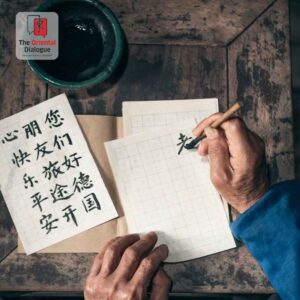大家好! Dà jiā hǎo!
I’m Aditi Kothekar – founder of The Oriental Dialogue, Mandarin teacher, and lifelong language enthusiast. After over a decade of teaching Chinese and interacting with hundreds of learners, I’m often asked one question: “What’s the easiest way to learn Mandarin?”
If I had a yuan for every time I was asked that, I’d be writing this from a beach in Hainan!
Mandarin can feel overwhelming to beginners, but I promise you — it doesn’t have to be. With the right strategy, learning Chinese can be joyful, intuitive, and deeply rewarding. Today, I’m letting you in on my top 3 secrets to learning Mandarin quickly and effectively.
1. Learn Real-Life Phrases, Not Just Grammar Rules
Grammar is the backbone of any language, but memorising grammar patterns in isolation is a trap. Mandarin grammar is beautifully logical and minimal, but its true power lies in how it flows within phrases.
Instead of drilling grammar patterns like 是 (shì) or the “A 不 A” question form, try embedding them in everyday expressions:
- 是不是啊?(shì bú shì a?) – Right? Isn’t it?
- 好不好?(hǎo bù hǎo?) – Okay?
- 你要不要吃饭?(nǐ yào bù yào chī fàn?) – Do you want to eat?
By learning grammar through high-frequency phrases, you naturally absorb patterns the way native speakers do. This not only boosts fluency but also helps you understand how Chinese people think and express themselves.
 2. Tune Into the Rhythm of Mandarin
2. Tune Into the Rhythm of Mandarin
Every language has its own music. Mandarin’s rhythm is shaped by tones, intonation, and cultural cadence. It sounds vastly different from Hindi, Marathi, or English — and that’s the beauty of it.
To pick up this rhythm:
- Listen to Chinese podcasts, songs, and nursery rhymes.
- Watch Chinese dramas and mimic the way native speakers speak.
- Replay short audio clips and shadow the pronunciation.
Think of Mandarin lessons like your favourite song — listen repeatedly until you can hum the lyrics! Over time, you’ll internalize tone patterns and pronunciation. Remember, the goal isn’t just to speak Mandarin — it’s to sound like someone who truly belongs in the language.
3. Embrace 汉字 (Hànzì) — The Characters
Chinese characters can be intimidating, but they’re also the most fascinating part of the language. Unlike alphabetic systems, Mandarin is written using thousands of logograms — each with meaning, history, and structure.
Most beginners try to brute-force characters by copying them repeatedly. But repetition without logic leads to burnout.
Here’s a better approach:
- Learn characters in context: Write full sentences and short paragraphs.
- Use physical dictionaries occasionally — looking up radicals and stroke counts helps build memory.
- Break down characters into components. For example:
- 手 (shǒu) – hand
- 机 (jī) – machine
- 手机 (shǒujī) – mobile phone
- 飞 (fēi) – to fly
- 飞机 (fēijī) – airplane
Practice writing with meaning and intent, not just rote repetition. This helps you remember characters and understand the story behind them.
 In Summary…
In Summary…
Mandarin is not just a language — it’s an experience. A bridge between ancient culture and modern opportunity. Whether you’re learning for work, study, or passion, approach it with curiosity and creativity.
At The Oriental Dialogue, we make this journey fun, structured, and immersive. From HSK preparation to spoken fluency programs, we’re here to help you speak Mandarin with confidence.
📌 Ready to start your Mandarin journey or need tips for your current level? Drop a comment or check out www.theorientaldialogue.com for classes, practice sessions, and inspiration!
再见!Zàijiàn! (Goodbye!)




